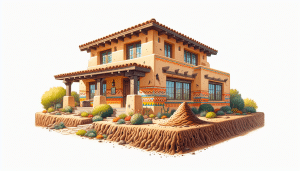Termites love our desert homes almost as much as our dogs love a sun nap on the patio. If you’re in Maricopa County and you want to keep Pests out without putting pets at risk, you’re not alone. Here’s a pet-friendly game plan that’s gentle on paws and tough on wood-eating bugs.
Contents
- 1 Why pet-safe termite tactics matter in Maricopa County
- 2 Natural termite repellents that play nice with pets
- 3 Yard and home tweaks that starve termites (and keep pets comfortable)
- 4 What about borax, vinegar, and DIY foggers? Let’s be honest
- 5 Seasonal rhythm in the Valley: staying ahead of swarms
- 6 When natural isn’t enough: pair gentle steps with expert Treatment
- 7 Quick reference: pet-safe termite ideas at a glance
- 8 Ready for safe, effective help? Call Arizona Termite Control
Why pet-safe termite tactics matter in Maricopa County
Termites in the Valley don’t take long vacations. We see Subterranean termites most often—especially the desert varieties that thrive in warm soil, drip lines, and slab cracks. During spring and through monsoon humidity, swarmers can pop up around porch lights, stucco weep screeds, and expansion joints. Pets complicate the picture in the best possible way. Dogs and cats nose around planters, chase lizards along the block wall, and sip from outdoor bowls. So yes, we want pet-safe termite control methods that reduce risk while keeping pressure on termite activity. You know what? That balance is possible.
Natural termite repellents that play nice with pets
Let me explain a quick truth. “Natural” methods mostly repel and monitor; they don’t always wipe out a colony. Still, they’re great for Prevention, early pressure, and peace of mind—especially when pets are part of the family.
Scent-based nudges (with common-sense caution)
Some aromas annoy termites. A few can be pet-safe when used smartly and sparingly.
- Cedarwood oil (outside-only): Lightly treat fence bases or planter edging; keep oils away from pet beds and bowls.
- Orange oil (d-limonene): Works on contact for Drywood pockets inside furniture; keep pets out of treated rooms until aired out.
- Lemongrass oil (diluted, spot use): Helpful as a repellent on exterior trim. Avoid overuse; cats are sensitive to strong essential oils. A quick caution: Tea tree and strong essential oil diffusers aren’t pet-friendly. If you can smell it strongly, your pets can too—so go light, and never on surfaces they lick or lie on.Food-grade diatomaceous earth (DE)
- What it does: DE acts like microscopic shards that dry out tiny insects. It’s mechanical, not chemical.
- Where to use: Lightly dust wall void entry points, under baseboards (sealed away from pets), or along exterior cracks that stay dry.
- Pet note: Use food-grade only; apply in hidden areas; avoid dust clouds so no one—pets included—breathes it in.Beneficial nematodesThese are microscopic helpers—Steinernema and Heterorhabditis species—released into moist soil where termites travel.
- How they help: They parasitize insects below ground.
- Where they shine: Shady, irrigated beds. In full Arizona sun they dry out fast, so timing is everything.
- Pet note: Harmless to pets and plants.Orange oil spot treatments for drywood pocketsFor localized drywood activity in a single piece of trim or a chair, orange oil can help when injected into galleries. It’s not a whole-home solution for subterranean termites, but for a small, contained issue it’s a gentle step. Keep pets out of the treated area until vapors dissipate.
Yard and home tweaks that starve termites (and keep pets comfortable)
Sometimes the most “natural” repellent is a drier, cleaner, gap-free home.
- Break soil-to-wood contact: Lift dog houses and storage bins onto concrete pads or metal stands.
- Trade wood mulch for gravel: Around the stem wall, use 12–18 inches of pea gravel instead of wood chips. It looks sharp and dries fast.
- Fix moisture magnets: Repair leaking hose bibs and drip lines. Move pet water bowls a few feet from the slab.
- Create a sand moat: A 3–4 inch band of coarse sand near the foundation makes tunneling tougher.
- Trim and clear: Keep plantings off stucco; clear stacked firewood at least 20 feet from the house and 6 inches off the ground.
- Seal the little stuff: Caulk around utility lines, weep screeds, and baseboards where pets can’t reach. These steps sound simple because they are. And they work—especially in our dry climate, where one clogged emitter can become a termite oasis.
What about borax, vinegar, and DIY foggers? Let’s be honest
You’ll hear mixed advice. Some of it sounds convincing, so here’s the straight talk.
- Borax/boric acid: While it can harm insects, it can also harm pets if ingested. In pet homes, it isn’t worth the risk.
- Vinegar sprays: Smells strong, does little to termites. It can clean, but it won’t stop a colony.
- Bug bombs/foggers: They don’t reach hidden galleries or soil tunnels. You’ll air out your house and still have hungry termites. There’s a pattern here: if it seems too easy, it usually is. Gentle methods help with prevention and pressure, but true structural infestations need a deeper plan.
Seasonal rhythm in the Valley: staying ahead of swarms
Spring warm-ups and monsoon humidity wake underground colonies. You might see winged swarmers near lights, mud tubes creeping up the slab, or tiny pellets from drywood pockets. That’s your “call the pros” moment. Small habits help between seasons:
- Run a monthly flashlight check: Stem wall, water heater closet, garage baseboards, and block-wall cracks.
- Mind your irrigation schedule: Short, targeted runs beat daily soaking.
- After storms: Clear pooled water, check for new mud tubes, and reset displaced gravel. A little rhythm goes a long way against Maricopa County termite pressure.
When natural isn’t enough: pair gentle steps with expert Treatment
Here’s the thing: natural termite repellents deter. Professional methods eliminate. When colonies nest deep in soil—far past where oils and DE can reach—strategic Termite Treatment finishes the job. At Arizona Termite Control, we use an Integrated Pest Management approach that blends low-disruption methods with precise targeting:
- Bait systems (like station arrays around the slab) that are low-odor and pet-conscious.
- Localized foams in wall voids to stop activity without broad spraying.
- Trenching/rodding focused on high-risk zones such as weep screeds, cold joints, and patio footers. We time service around pets, flag drying periods, and choose materials with strong results and sensible safety profiles. It’s not flashy. It’s thorough, and it lasts.
Quick reference: pet-safe termite ideas at a glance
| Method | Best Place To Use It | Pet-Safety Notes |
|---|---|---|
| Food-grade DE | Hidden cracks, dry interior voids | Keep dust out of air; use food-grade only |
| Beneficial nematodes | Shady, irrigated beds/planters | Safe for pets; apply in the evening |
| Cedar/Orange oil (light use) | Exterior trim, isolated drywood spots | Keep away from bowls/beds; allow to air out |
| Gravel barrier | Along foundation/stem wall | No chemicals; reduces moisture |
| Coarse sand band | 3–4 inches near slab edge | Physical barrier; pet-friendly |
These are smart helpers. For structure-wide protection, pair them with a professional Termite Inspection and a targeted plan.
Ready for safe, effective help? Call Arizona Termite Control
Want a plan that respects your pets and protects your home? We’ll tailor a solution that starts gentle and goes precise where it counts. Call us at 480-660-3093 or Request a Free Inspection.




